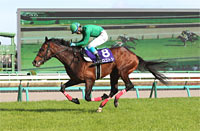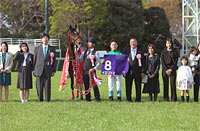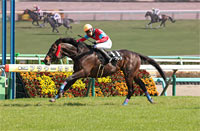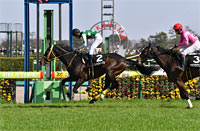2015 News
Data Analysis for the “2015 Nakayama Grand Jump (J-G1)”Pinnacle of Japanese hurdling presents a steep challenge A list of winners over the last 10 years is like a roll call of top hurdlers from Japan and abroad – like Australian-trained Karasi, bagger of three straight wins from 2005, or Majesty Bio in 2012 and Apollo Maverick in 2014, both rubberstamping their domination of Jump G1 after victory in the previous year’s Nakayama Daishogai. Like last year, there are no foreign-trained entrants again this time, leaving the Japanese contingent to compete for the spoils. So now let’s search for some trends in this race from results over the last 10 years (including 2011, when it was held in July). Favored horses dominate If we check the runners’ aggregate performances over the last 10 years in terms of their favoritism, we find that 18 of the 30 top 3 finishers came into this race as “1st-3rd favorite”. So the more heavily favored horses would appear to enjoy better success. Of the others, runners backed as “8th favorite” have made it into the top 3 six times. [Table 1] [Table 1] Performance by favoritism (last 10 years)
Check the finish in the most recently completed hurdles race Next, let’s look at performances over the last 10 years in terms of the runners’ finish in their most recently completed hurdles race. Horses finishing “1st” in that race have racked up some impressive figures, including a top 3 ratio of 50.0%. What’s more, if we compare each group’s top 2 and top 3 ratios, the ratios diminish in size as the finish goes progressively lower. Incidentally, the most recently completed hurdles race was a maiden hurdle race for seven of the horses finishing “1st” in that race – and all seven of them have been beaten to 4th or lower in this race. [Table 2] [Table 2] Performance by finish in the most recently completed hurdles race (last 10 years)
* Including overseas races
Check the venue and distance of the previous race Comparing the runners’ performances over the last 10 years in terms of the venue and distance of their previous race, 24 of the 30 top 3 finishers had most recently competed in a hurdles race over “3,200m+”. In fact, all of the last 5 winners had most recently contested “a hurdles race over 3,200m+ at Nakayama Racecourse”. This year, too, it should be worth checking the runners’ path to this race. [Table 3] [Table 3] Performance by venue and distance of previous race (last 10 years)
* Including overseas races
Omens are good for horses with only 1 start or at least 3 starts this year Finally, let’s check performances in 9 of the last 10 years (the exception being 2011, when the race was held in July) in terms of the number of races contested in the year in question. Here, the best success ratios have been scored by horses with only “1” previous outing that year. Following closely behind are those with “3 or more” starts, although the four victories in this group were provided by Karasi, with 3 straight wins from 2005 to 2007, and 2013 winner Blackstairmountain. As such, the only Japanese horses to have won this race are those with only “1” outing since the turn of the year. [Table 4] [Table 4] Performance by number of starts since the turn of the year (2005-2010, 2012-2014)
* Including flat races and overseas races
(Data analysis by Michio Kawano) |

|






















